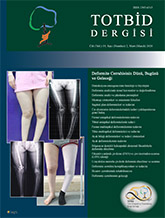
Deformity as a word addresses differentiating from normal anatomy. It includes a large spectrum of problems from one plane simple deformity to complex problems in 3 planes. Congenital, iatrogenic, neurological and posttraumatic causes are the mostly seen etiologic factors. Detailing deformity analysis needs evaluating patients in radiologic and clinical manners. Radiological evaluation has to be reliable and repeatable. There are some rules to obey like taking patella forward X-rays and putting the cassette to a proper distance. Clinical evaluation should include detailed physical exam, gait analysis if possible, and checking pattern of deformity to conclude whether the problem is dynamic or static. Particularly, in rotational problems surgeon should not forget that clinical exam is much more valuable than radiological evaluation. After radiologic and clinical evaluation, to analyze the deformity and to plan the treatment protocol, basic principles and concepts should be underlined. The meaning of orientation, alignment, how to draw mechanical and anatomic axes, and the relationship between joint orientation line and anatomic/mechanic axes and angles showing physiological borders should be known.